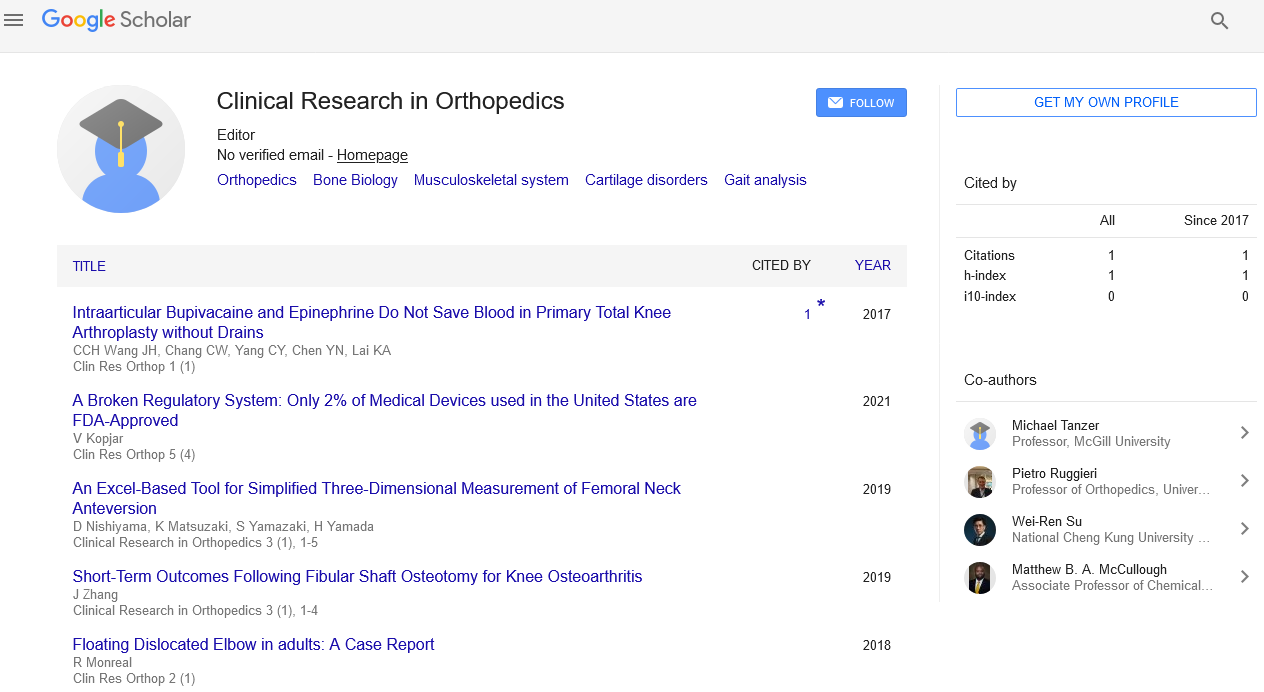A Single - Level minimally invasive transforaminal lumbar interbody fusion: Unilateral or bilateral pedicle screw fixation
Osama Attia
Mediclinic Middle East Park View Hospital & Emirates Specialty Hospital, UAE
: Clin Res Orthop
Abstract
Transforaminal lumbar interbody fusion (TLIF) procedure was introduced by Harms and colleagues as an alternative to PLIF. Although PLIF is still commonly performed, many surgeons now prefer the TLIF procedure in the management of a variety of spinal disorders that require lumbar arthrodesis. This procedure has many advantages including unilateral exposure, decreased neural retraction, and a more lateral angle of approach that facilitates revision surgery .The use of minimally invasive surgical techniques represents the most recent modification of methods used to achieve lumbar interbody fusion. The minimally invasive TLIF procedure was first described by Fooley et al. and it has become an increasingly popular method of lumbar arthrodesis. In contrast to the conventional methods of lumbar interbody fusion minimally invasive lumbar fusion uses a tubular retractor that is inserted via a muscledilating approach which can significantly diminish the amount of iatrogenic soft-tissue injury. As a result, the new procedure has shown the potential to reduce the amount of intraoperative blood loss, the intensity of postoperative pain, and the duration of hospital stay. With the goal of less invasive surgery in mind, a question was raised about the ability of unilateral pedicle screw fixation to adequately stabilize posterior fusion construct. In a recent biomechanical study, all tested TLIF construct augmented by posterior instrumentation showed a decrease in the segmental range of motion and an increase in stiffness. Placing unilateral pedicle screw fixation allows for an increase in segmental range of motion, and less stiffness compared to bilateral pedicle fixation. However, in a recent clinical trial it was shown the unilateral pedicle screw fixation can be as effective in terms of reducing pain and disability, and achieving fusion as the bilateral pedicle screw fixation in one level spinal fusion. The aim of this study is to compare the clinical and radiological outcomes following using either a unilateral pedicle fixation or bilateral pedicle screw fixation in patients undergoing minimally invasive TLIF.
Biography
 Spanish
Spanish  Chinese
Chinese  Russian
Russian  German
German  French
French  Japanese
Japanese  Portuguese
Portuguese  Hindi
Hindi 